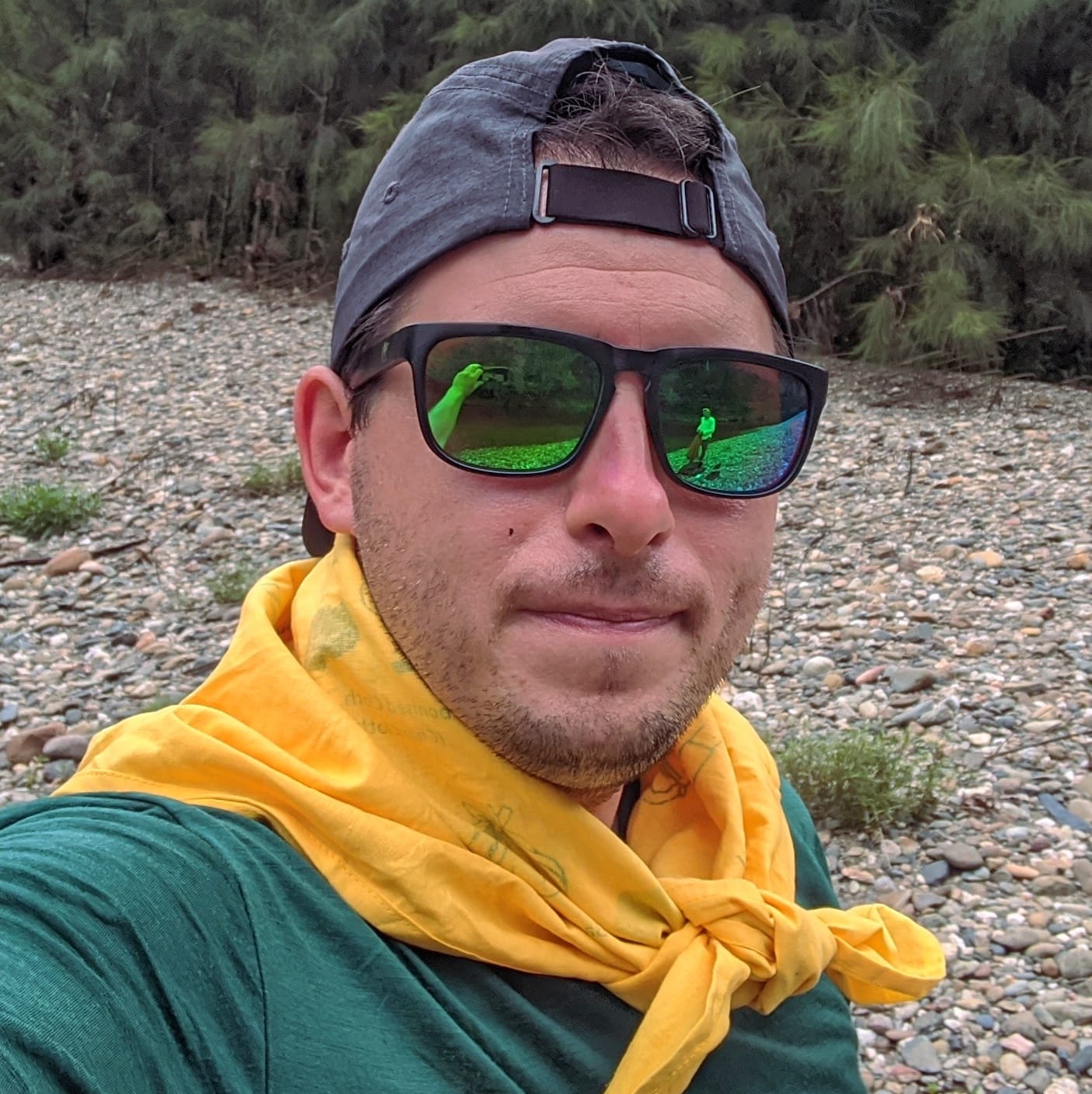The Bellinger River begins as a trickle in the upper escarpment of the Great Dividing Range in Northern NSW.
In this rugged country, a similar path follows the Bellinger from its headwaters known as the New England Wilderness Walk — a multi day hike from Point Lookout, through feeder the creeks to join the main rivers' flow down to Darkwood.
But, instead of following this trail down the range, my brother Tom and I went in backwards starting from the bottom of this walk in search of some off-trail wild river bass fishing in the pristine, far reaches of the Bellinger.
The summer had seen recent flooding, so there was some hesitancy about how far we'd get once we breached the trail. Driving in until the road disappears, we reached the banks of the Bellinger where old bridge footings are all that remain.
We were both green to bass fishing, having never chased them before. Surely, if there was a list of places to get hooked on Aussie bass, this would be near the top.
We had a solid day's hike along the trail with multiple river crossings, passing 4WD tracks and abandoned farmhouses, before crossing the river one final time into uncharted waters and making our own way.
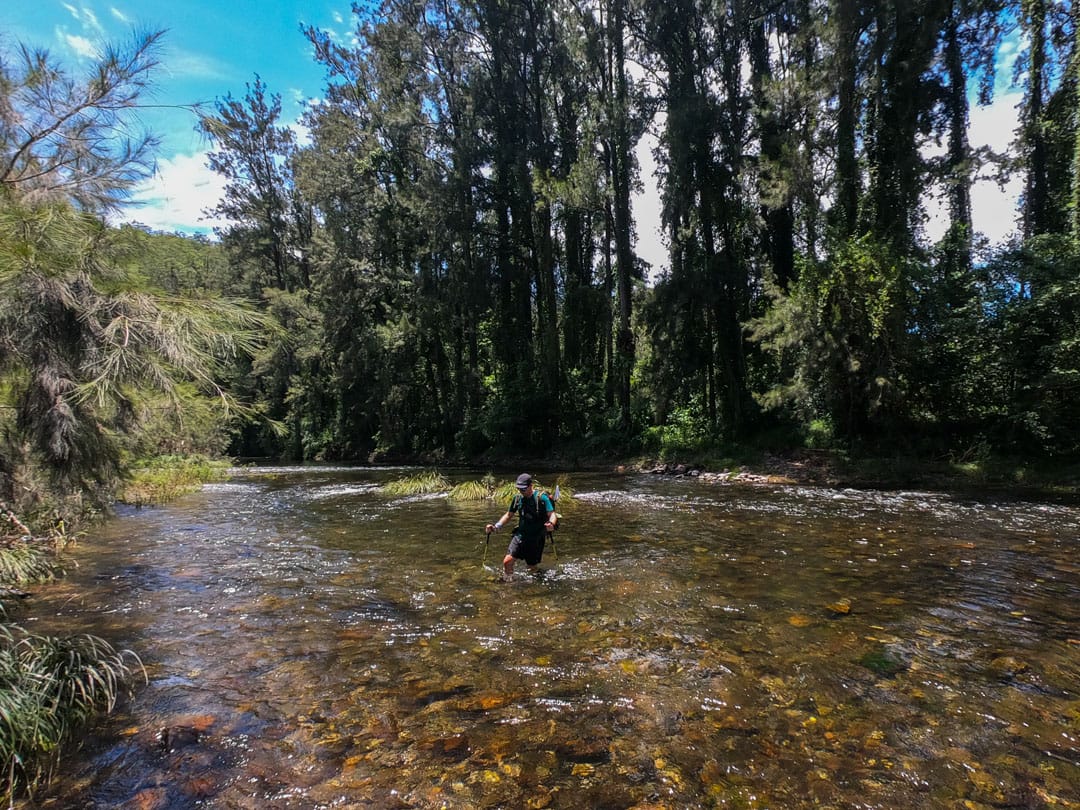
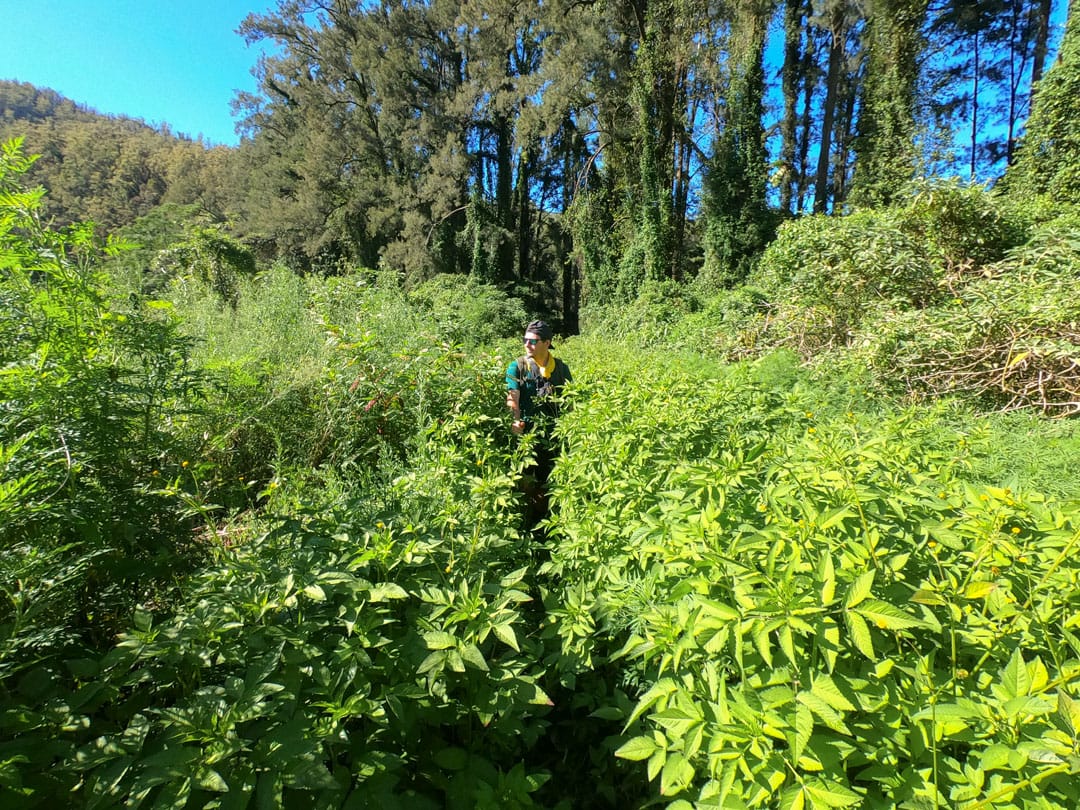
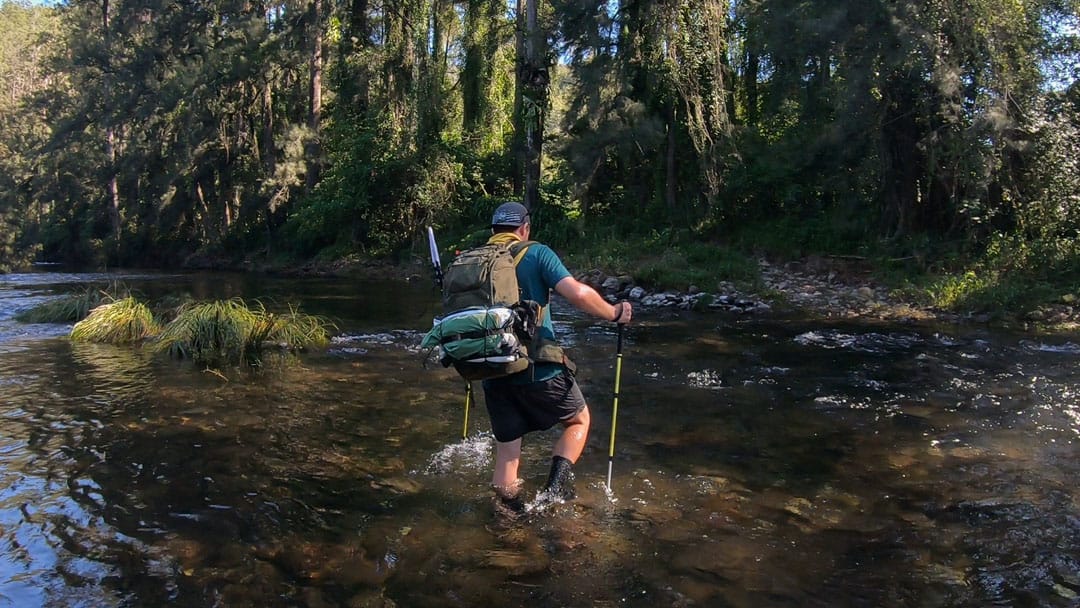
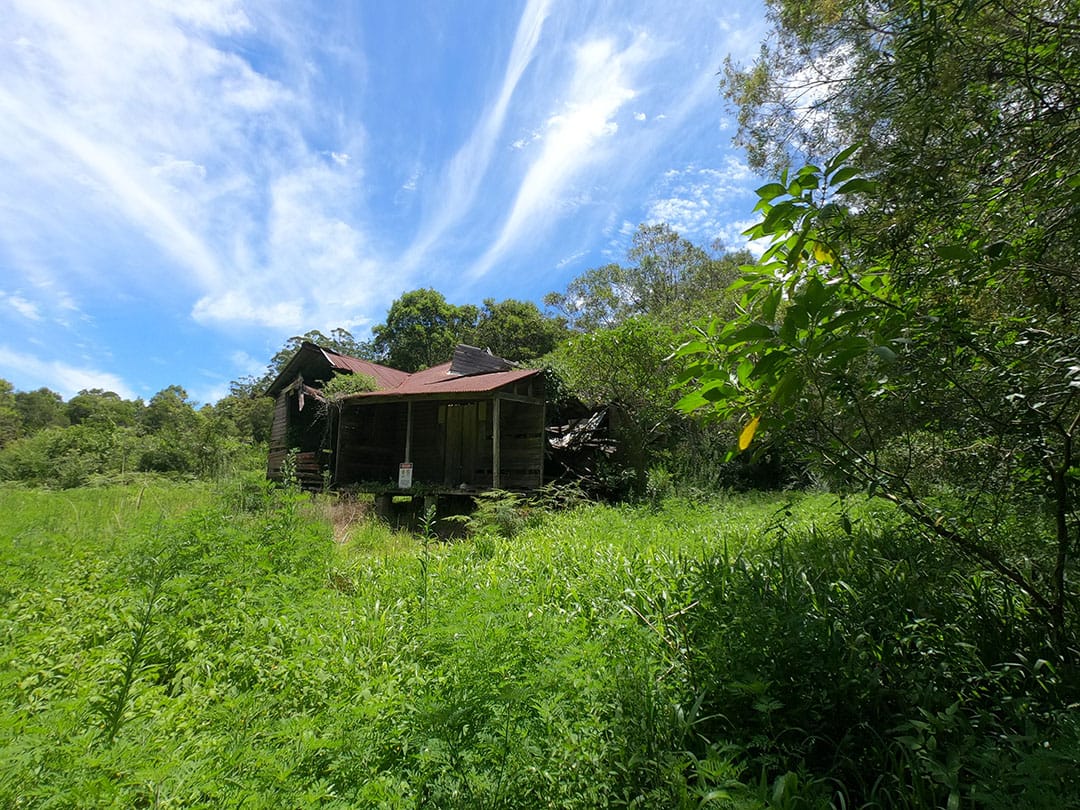
The evidence of flooding was clear, with significant changes to the river's shape and vegetation. This meant the water was high in parts, but still crystal clear thanks to the surrounding native forests feeding the upper reaches.
We found a suitable place to camp for the next few nights — perched on a natural bank in case more rain bolstered the river to rise again. We were conveniently located between a debris wall forming a natural damn with a deeper pool, and fast flowing shallows with our own private beach.
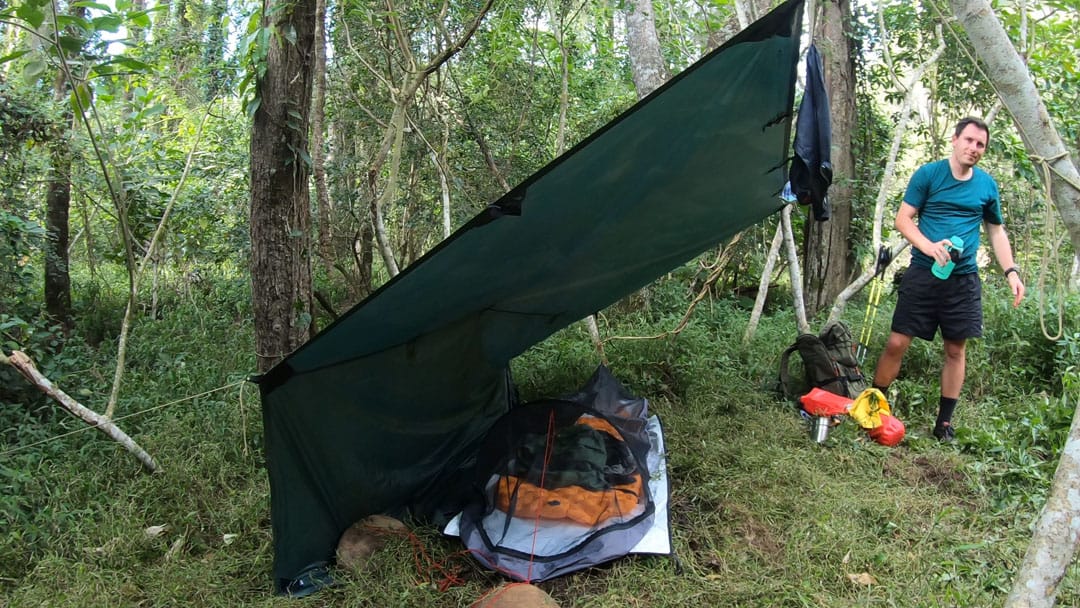
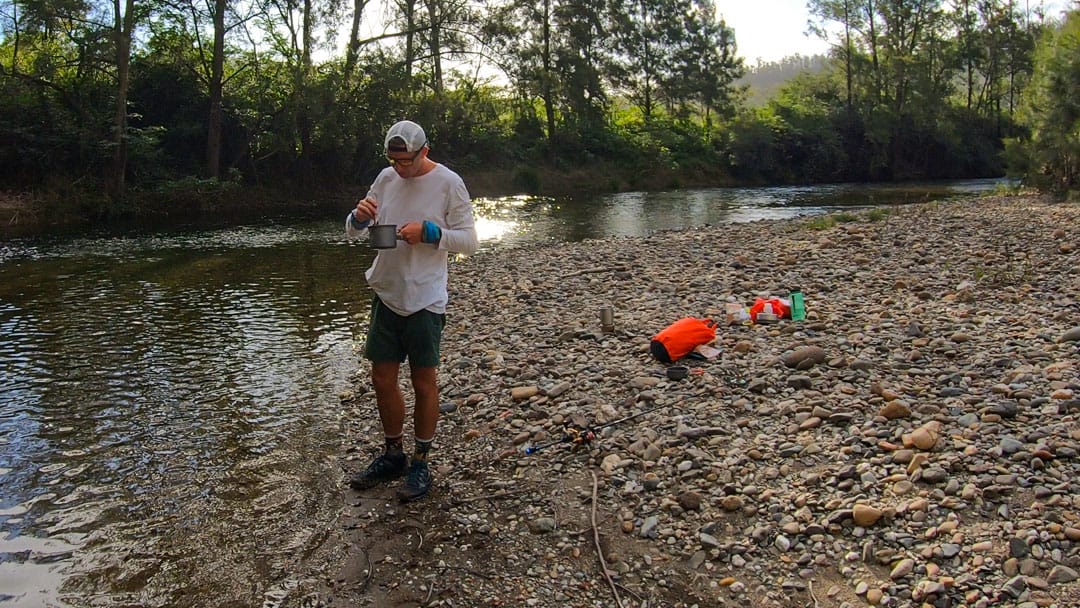
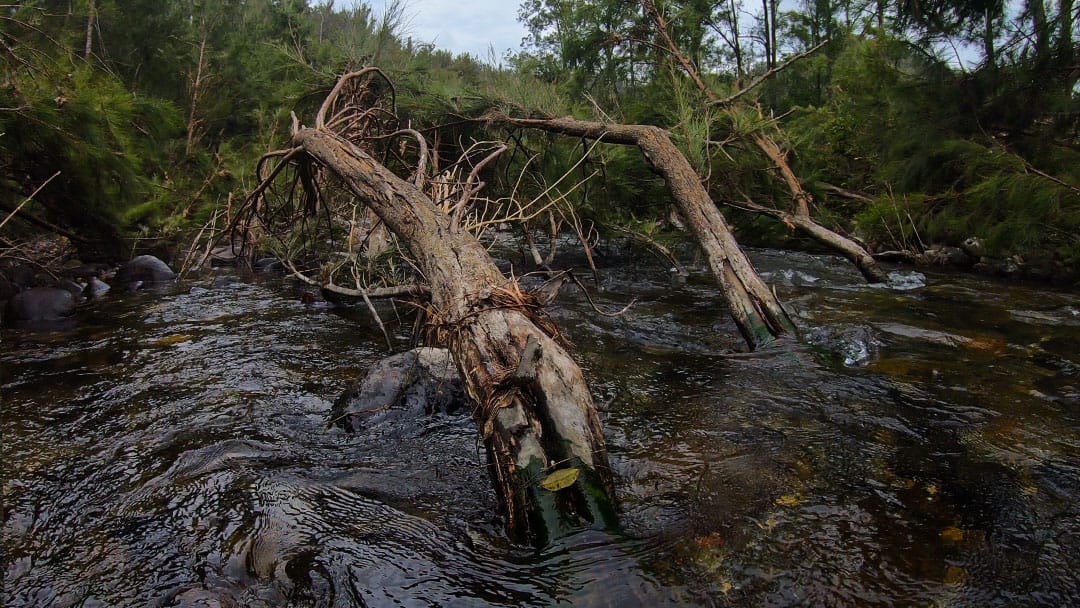
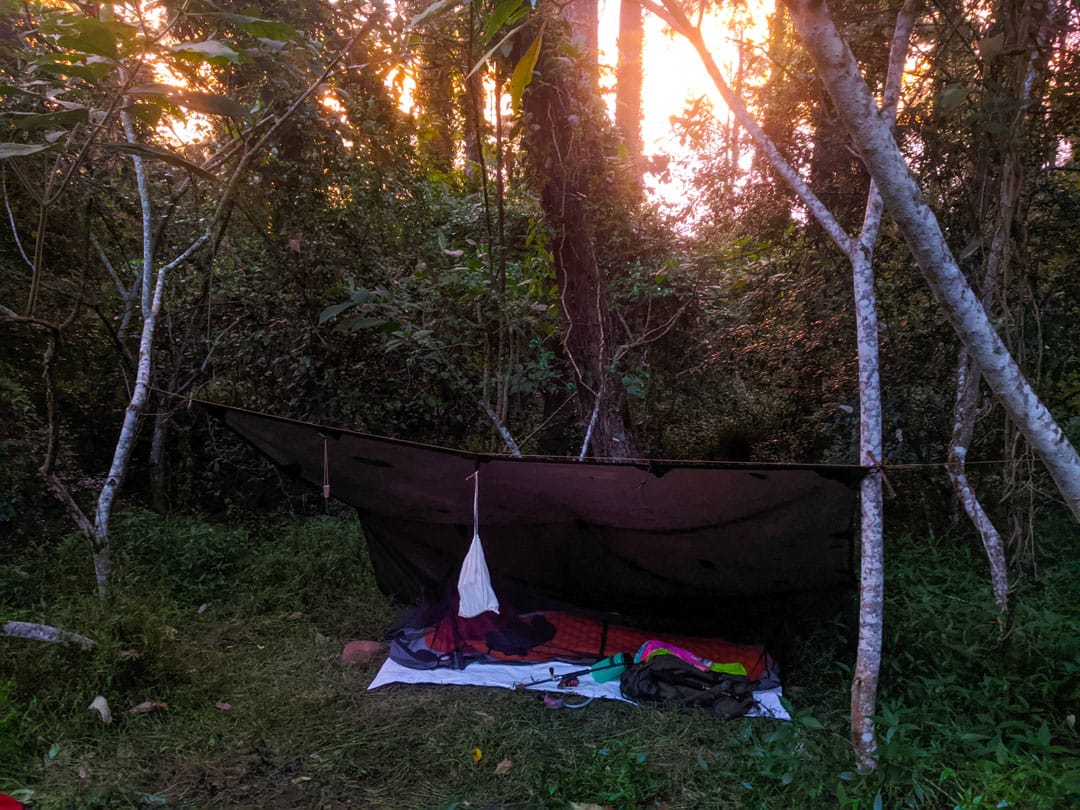
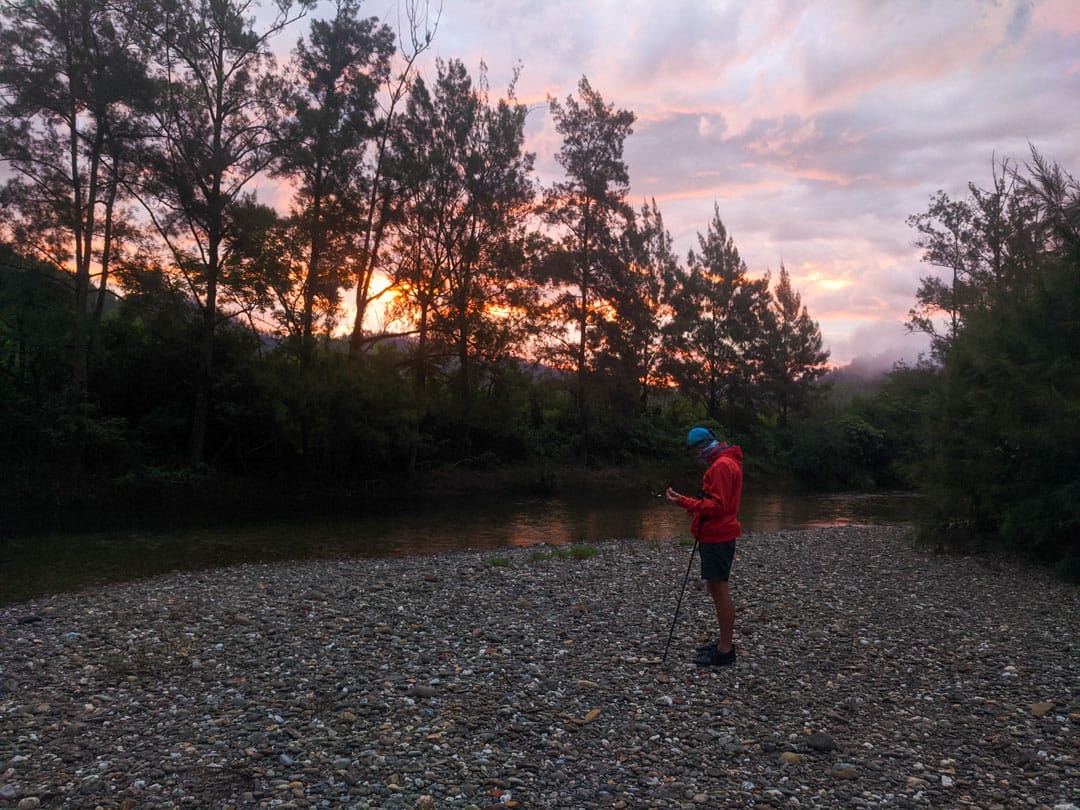
We explored and fished our way upstream most of the afternoon until the light started to fade, returning to basecamp and right on dark — with both of us landing our very first wild Australian bass. They were only little tuckers, but boy were we hooked!
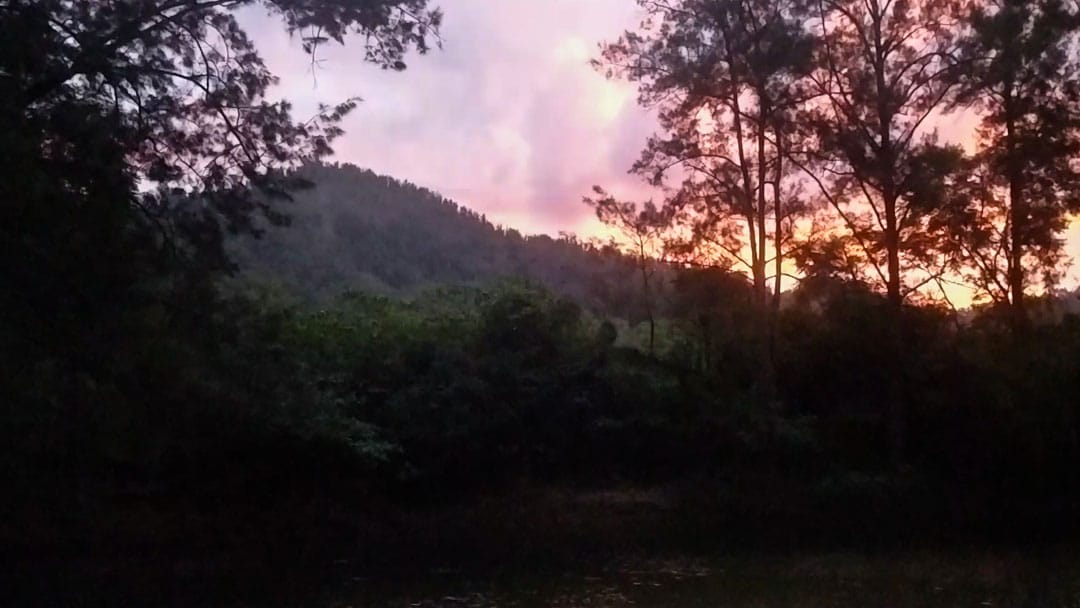
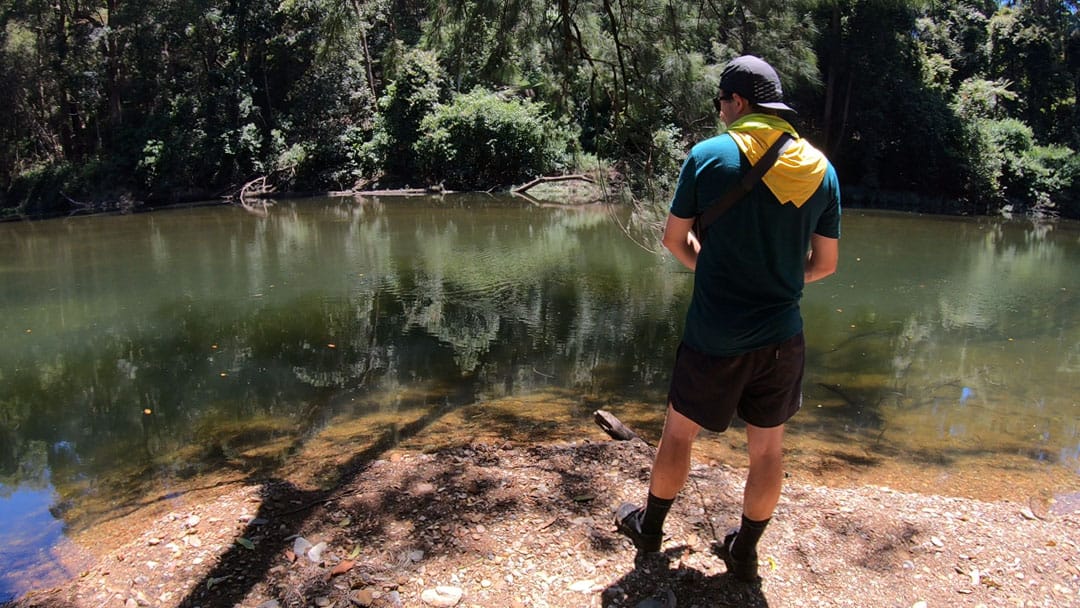
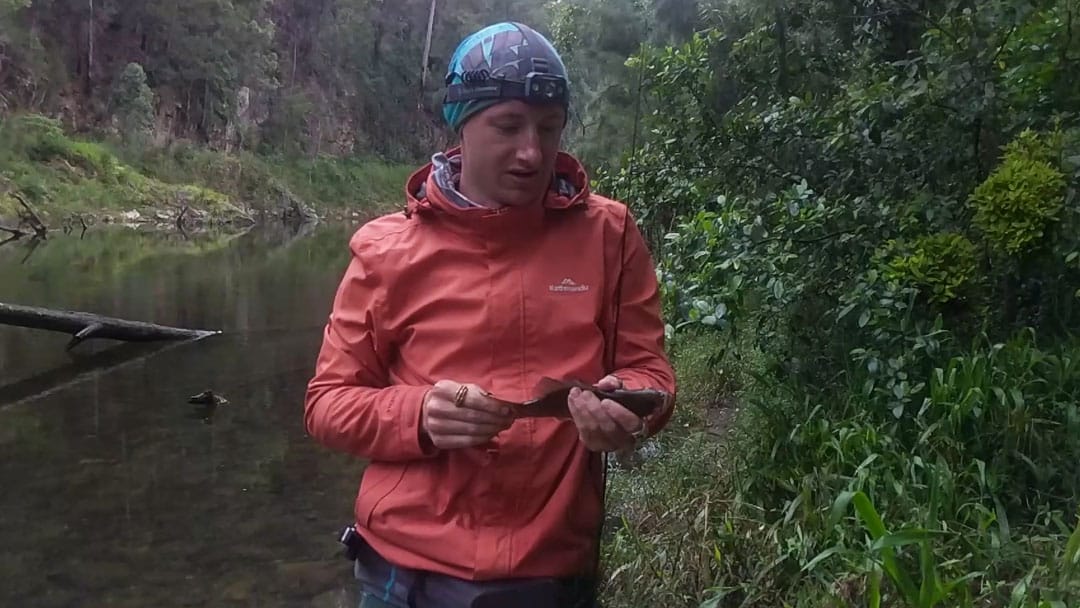
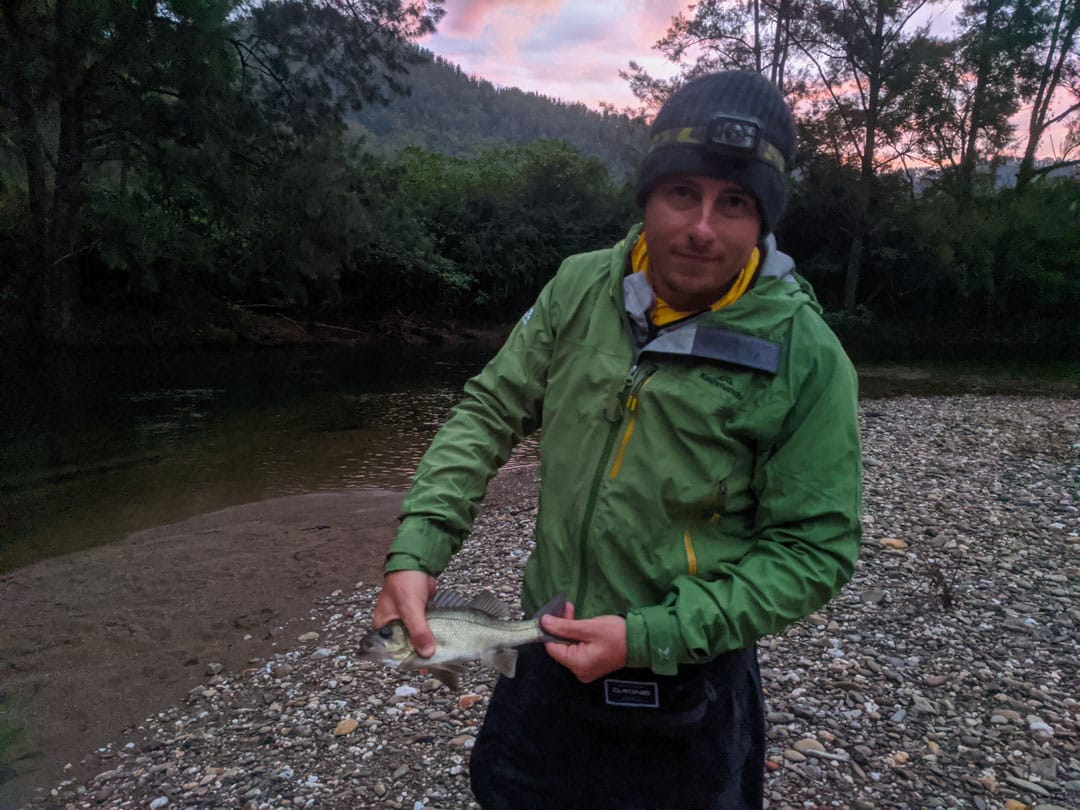
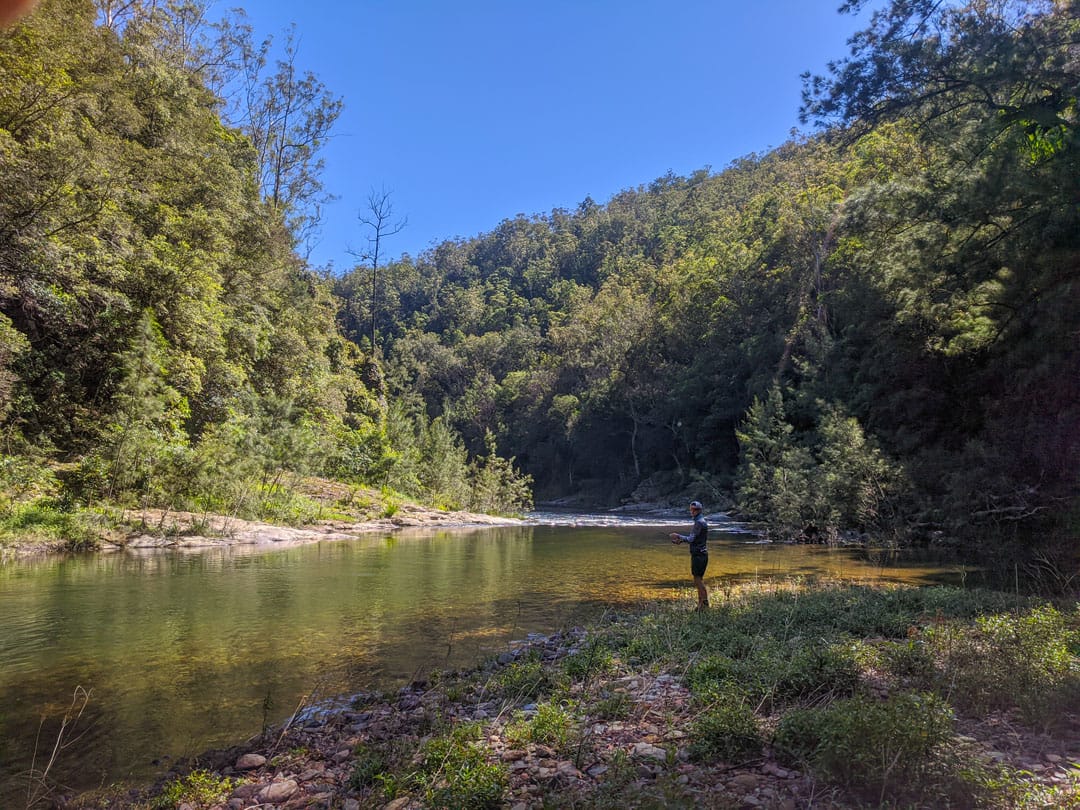
That night we were both kept awake with bops and activity in the water, so we were up and eager before first light. That's when Tom got his first decent bass.
We were both fishing with cheap telescopic travel rods and light 1000 or 2000 sized reels, but had noticed the cicada activity on the way in. This sealed the deal, casting top-water cicada imitations all day, only swapping to larger twitch baits after dark.
We pushed even further upstream on the second full day. Encounters included large freshwater eels, plenty of bass hiding in the shade, a few snakes and breath-taking scenery.
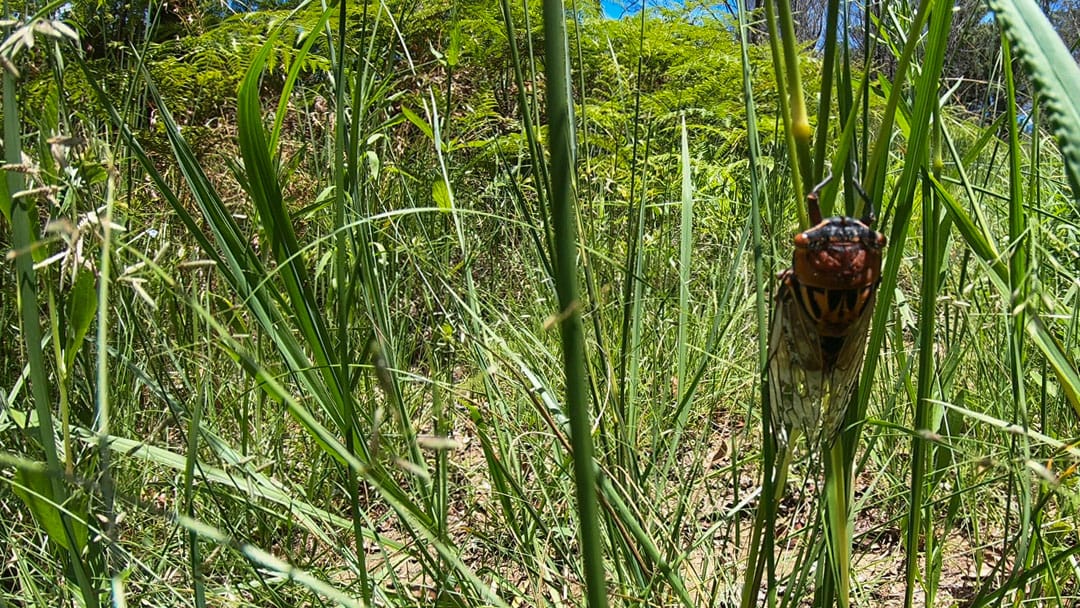
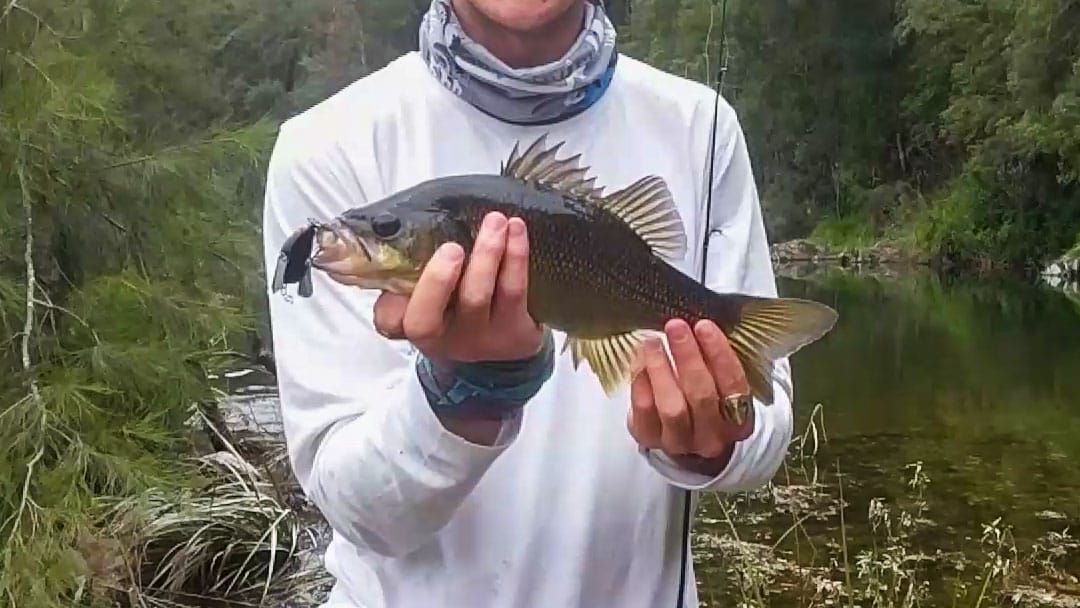
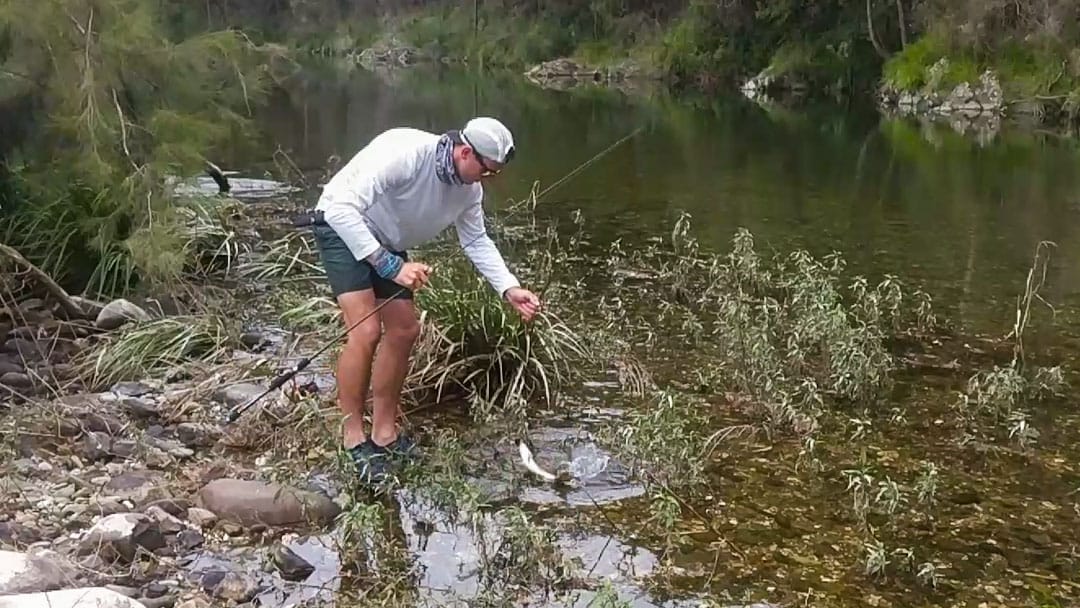
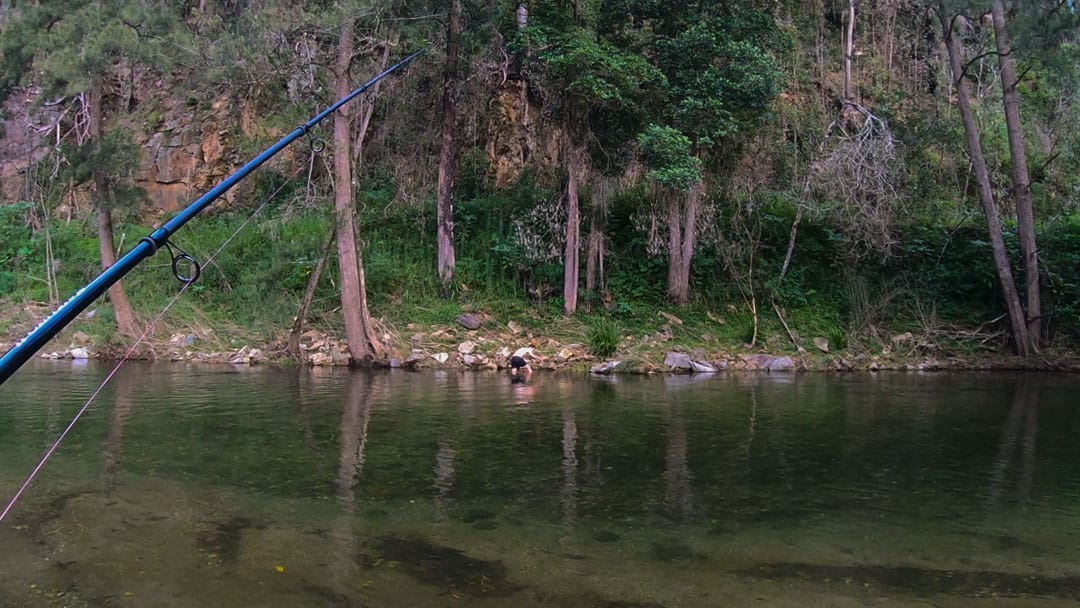

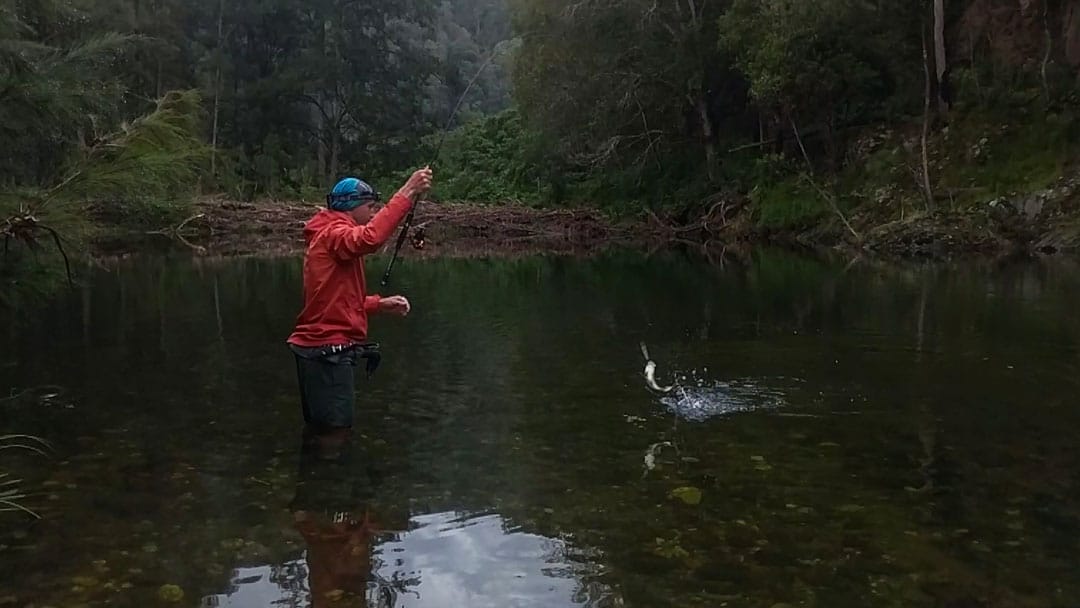

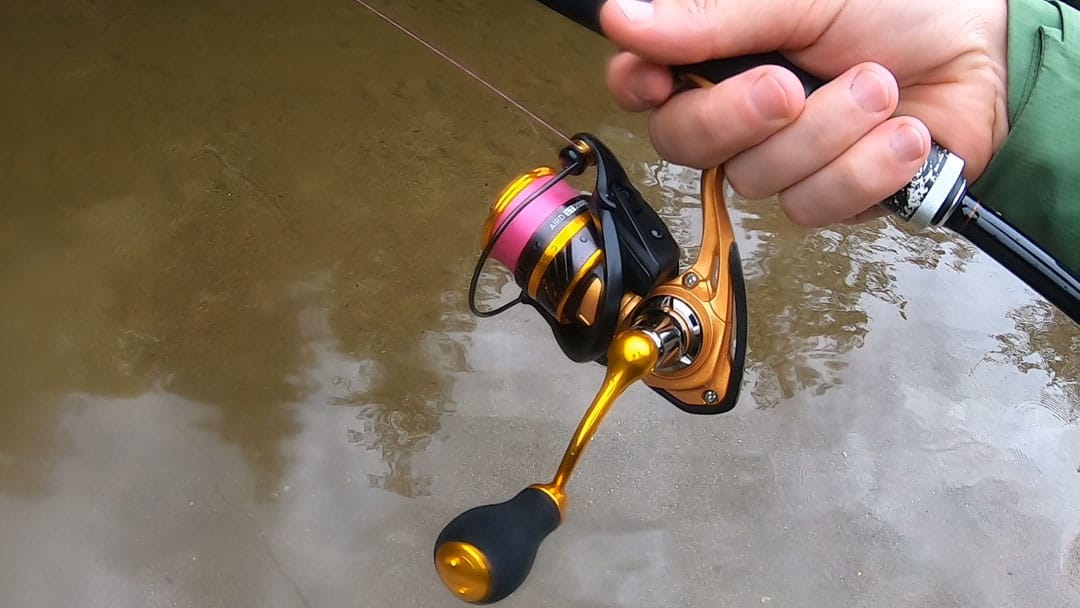
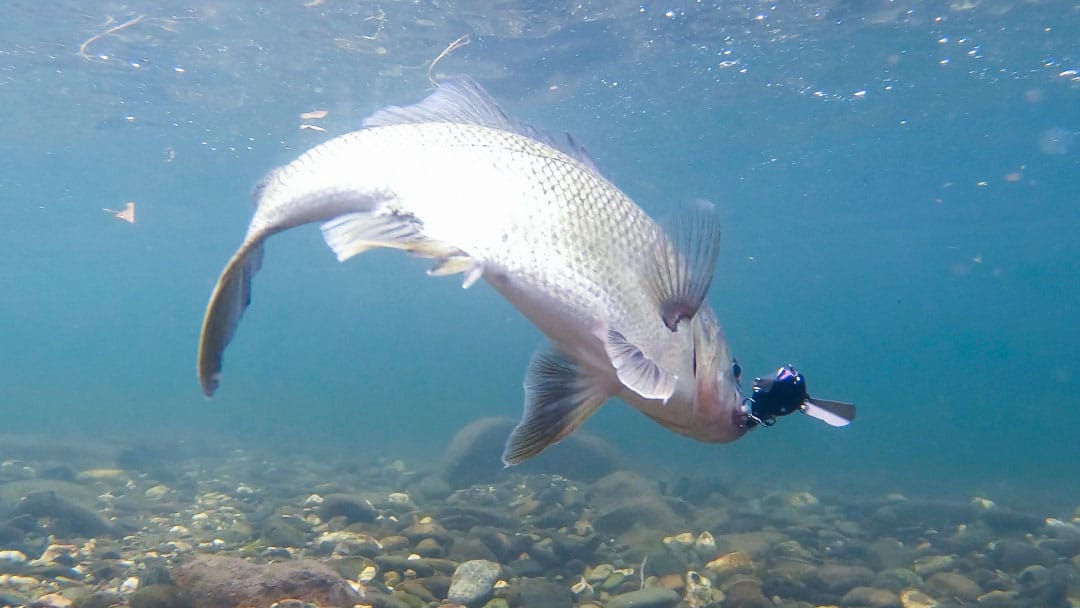
Returning for a final night, we were adamant about fishing late into the evening to catch some of those big bass we'd heard. We were not disappointed, with a spectacular sunset running into some of the most exciting fishing I've experienced.
Tom pulled off a trifecta of trophy-sized monsters on surface well after dark, while I struggled to land any larger fish but reeled in several smaller bass on sub-surface twitch baits.
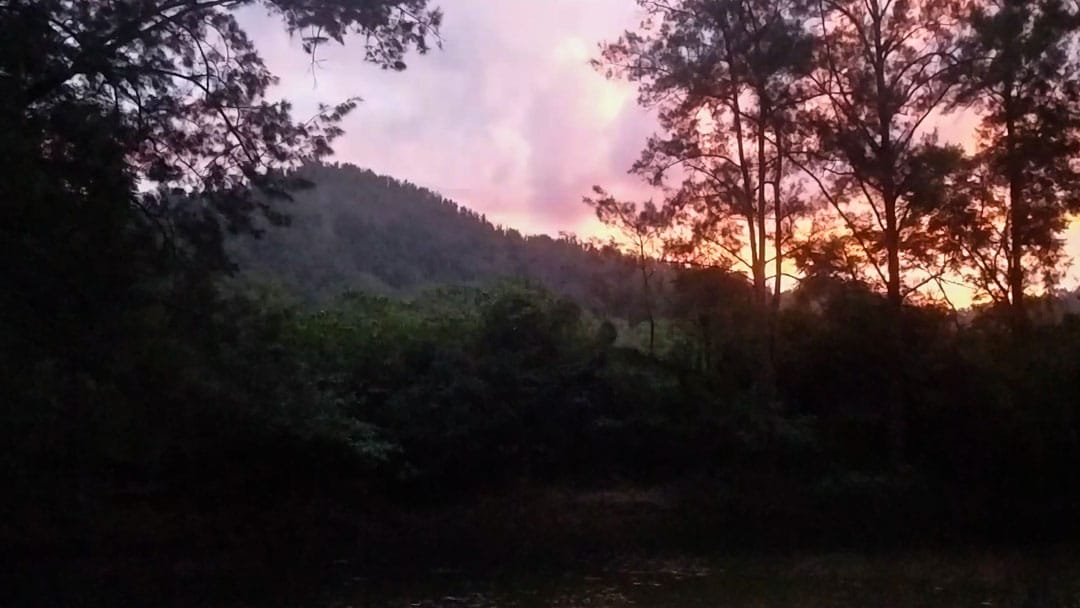
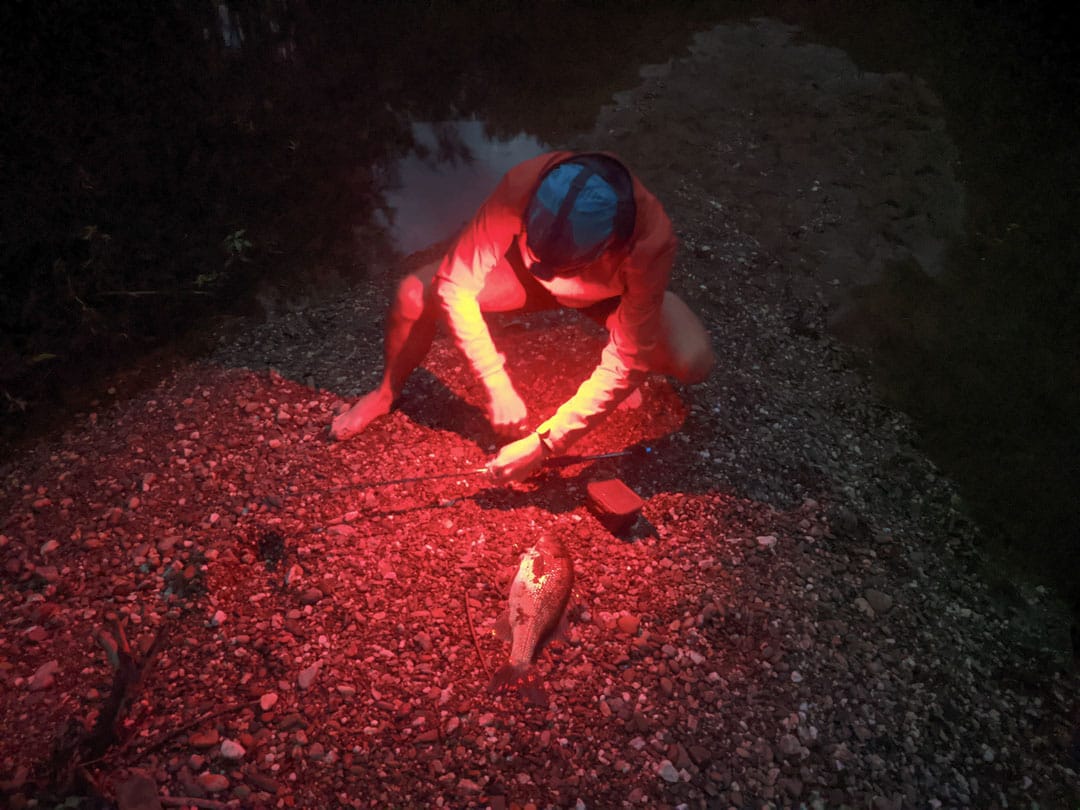
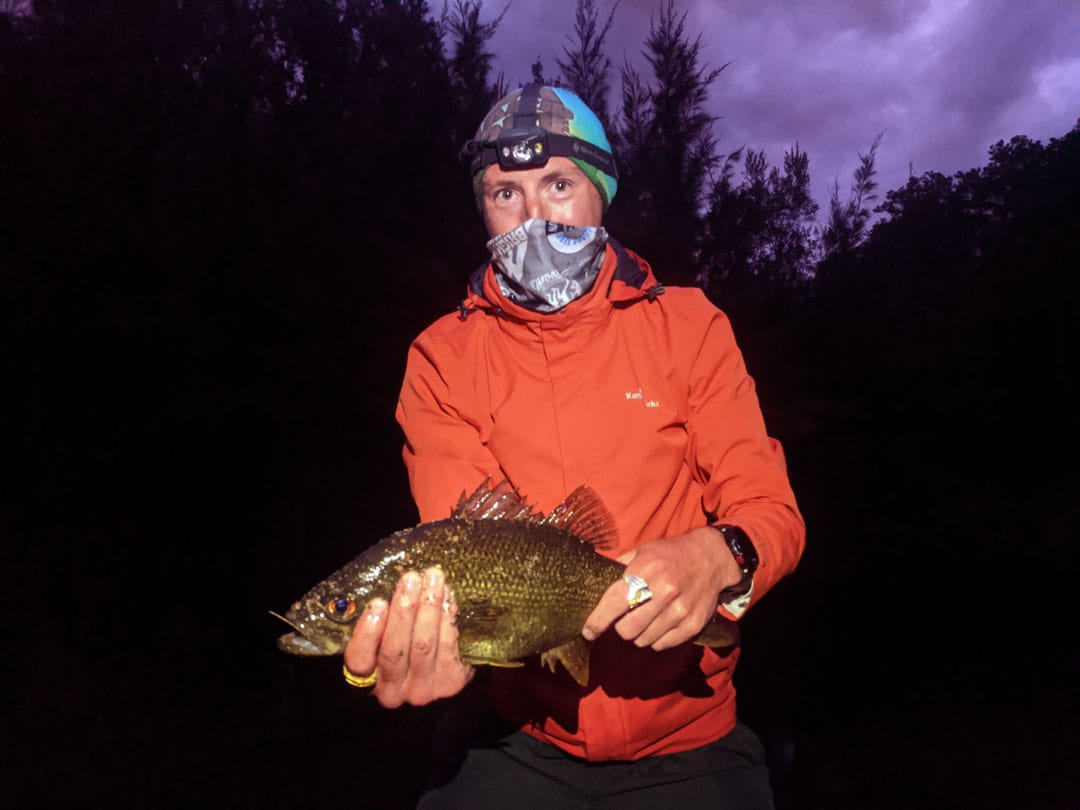
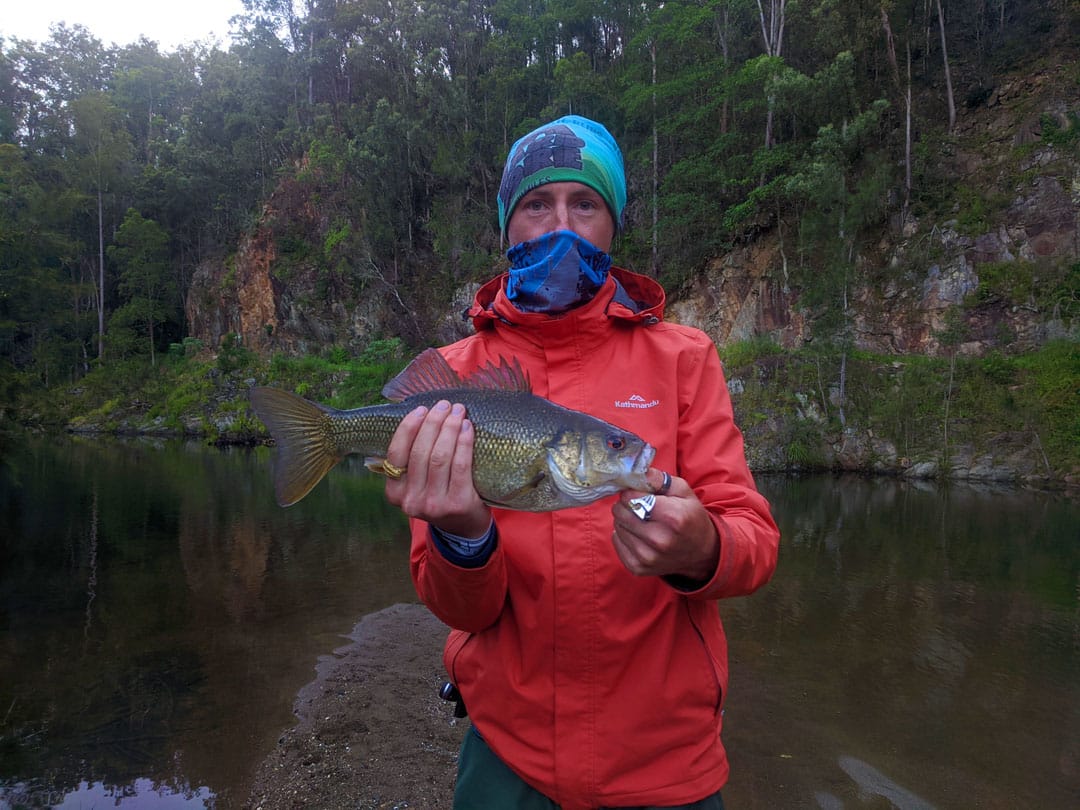
We packed in as much fishing as we could over the three days, but would have loved to spend a full week out here and pushing further up into the headwaters in search of some larger holes.
The hike back went quickly underfoot as we recounted the past few days, and our new love of this iconic Australian species.
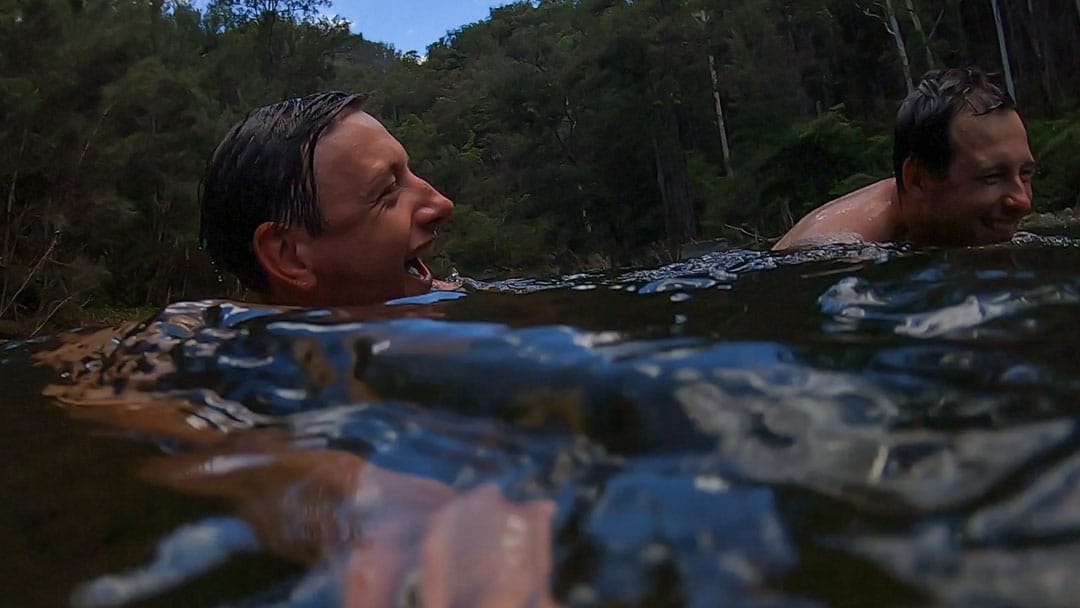
Places like this are truly worth the effort to find and reach, and the rewards are memories for a lifetime and stories to tell for many years to come.
